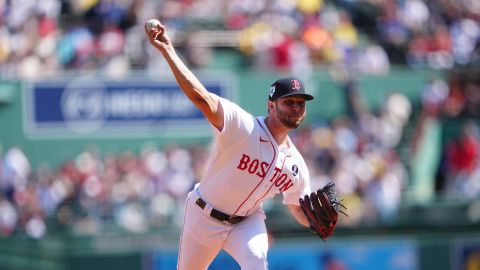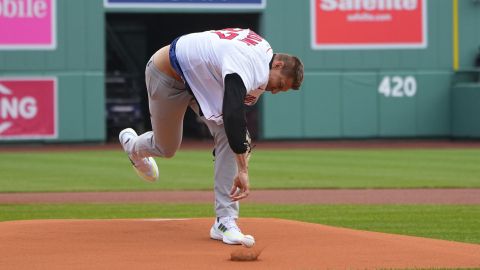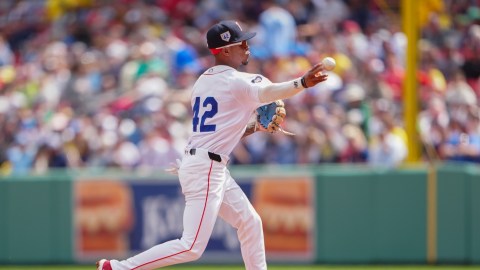The Red Sox have largely existed in recent years as a station-to-station team. They have a great burner in Jacoby Ellsbury and a good theft guy in Dustin Pedroia (and Carl Crawford if his on-base percentage ever got above .290), but for the most part, the club eschews those smaller things in the way of an offensive philosophy that has been wildly successful.
It’s been that way for some time and it’s hard to argue with the results; Boston led the majors in runs scored in 2011 and has ranked in the top three in the American League for five straight seasons.
However, as baseball has morphed in its post-steroid era into a pitcher’s game once again, the gap between the big bashers and sisters of the poor has decreased in size. While the need to manufacture a run here and there pops up, teams have adjusted.
Just take the AL East, for example.
The Yankees were one of the more aggressive teams in baseball on the base paths this year. The Rays thrive on that style. As he had promised, John Farrell was largely successful in reducing the Blue Jays’ reliance on the home run — they hit 71 fewer homers yet climbed from sixth to fifth in the AL in runs scored.
The Orioles were a bit more of a plodding team, but they showed in some of those late-season beatdowns of the moribund Sox that they were willing to push the issue. You will recall Vladimir Guerrero stealing second base in a big moment in Baltimore, one of 17 thefts the O’s had against Boston this season (the Sox had eight in those meetings).
And that’s where it became even more notable. Whenever Boston played teams that wanted to be aggressive, they looked overmatched. Texas and Tampa Bay made a mockery of the Red Sox on several occasions. They took the extra base. They ran every opportunity they could. They bunted (not too often, but in the right spots and most of the time with great execution). They made the playoffs.
The Red Sox do not need to change their entire philosophy, but having the ability to adjust would do wonders once they get mired into one of those games. Pitchers are better, bullpens are more specialized and defense is a priority for many teams. Offensive outbursts are not a given.
This necessary shift goes beyond the offensive approach. Although Boston was largely a good defensive team this season, it continued to struggle in limiting the running game. There were improvements, but opponents still pressed the issue. Multiple pitchers, notably Jon Lester, struggled with pickoff moves. Most of the staff did a poor job holding runners on. Cutoff men were missed, often allowing trailing runners to take an extra base on an unwarranted throw home.
All too often it felt as if the Sox needed that three-run homer to right their wrongs in other areas. So often they got it, but in the end it didn’t hide some of the team-wide problems they had. They weren’t going to outrun you, they weren’t going to manufacture much and yet they were going to give you opportunities through their inefficiencies in the aforementioned departments.
As long as your pitchers limited mistakes, the Red Sox were a team of which you could take advantage. And in a game that is seeing scoring drop on a yearly basis, that can kill you. Boston was 2-10 in September in games decided by two runs or less. It was 3-1 in games decided by nine runs or more. Those were the games when they got that three-run homer.
Runs were down in baseball for the fifth straight season in 2011. They have dropped nearly 17 percent since the beginning of the last decade. Boston can still lead the league in runs scored, but it has to know that more 3-2 games will be on the docket than in years past. And when those games come at a considerable clip, doing the little things can make all the difference.
Make a good pickoff throw. Steal an extra base. Bunt a runner to third with no outs. Nail Vladimir Guerrero stealing second, or at least do enough to keep such a speed demon close.
Boston ranked last in sacrifice bunts. It was ninth in steals. Its pitchers, who led all of baseball in throwing errors in 2010, still had one of the league’s highest totals in 2011. Opponents were successful stealing bases 24 percent of the time, barely better than three other AL squads.
In metric rating systems, both Red Sox pitchers and catchers ranked as the worst in the league defensively.
All too often, especially down the stretch, each of these factors came into play.
Baseball in 2012 will be different than it was in 2002. Pitchers will remain in charge. Runs will continue to be at a premium. Therefore, the need to be aggressive and clean is paramount. Teams like the Red Sox can get by on pure offensive skill, but they need to be able to adjust and play small ball (both offensively and defensively) to become as good as they can be.



